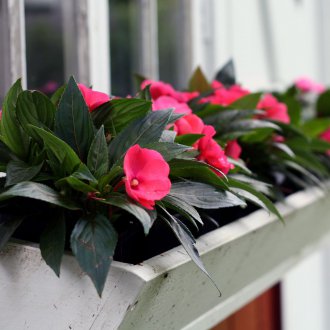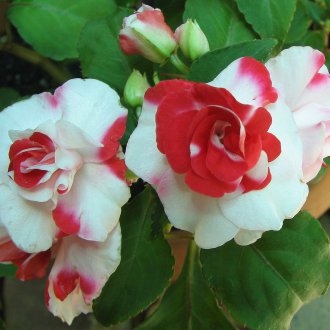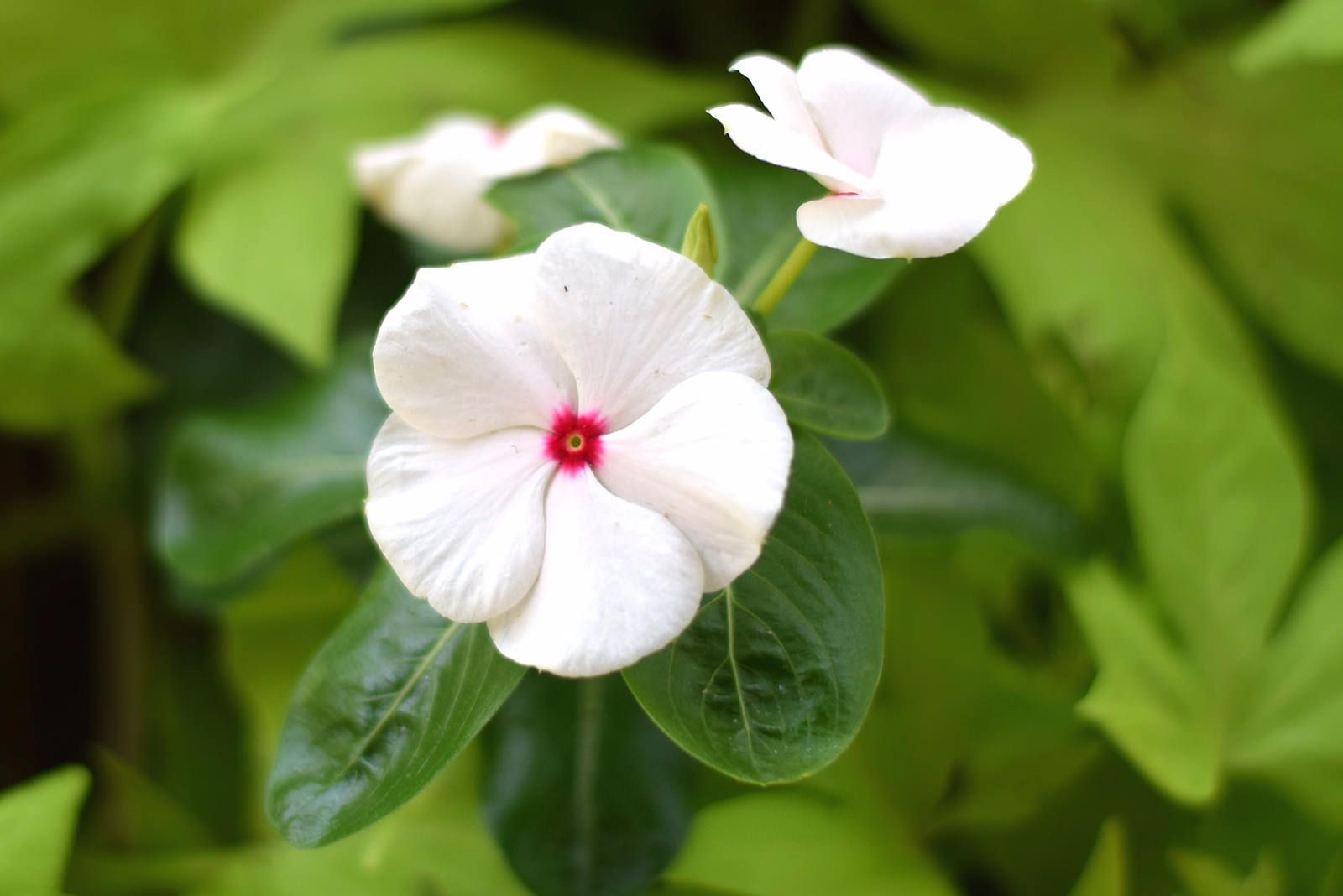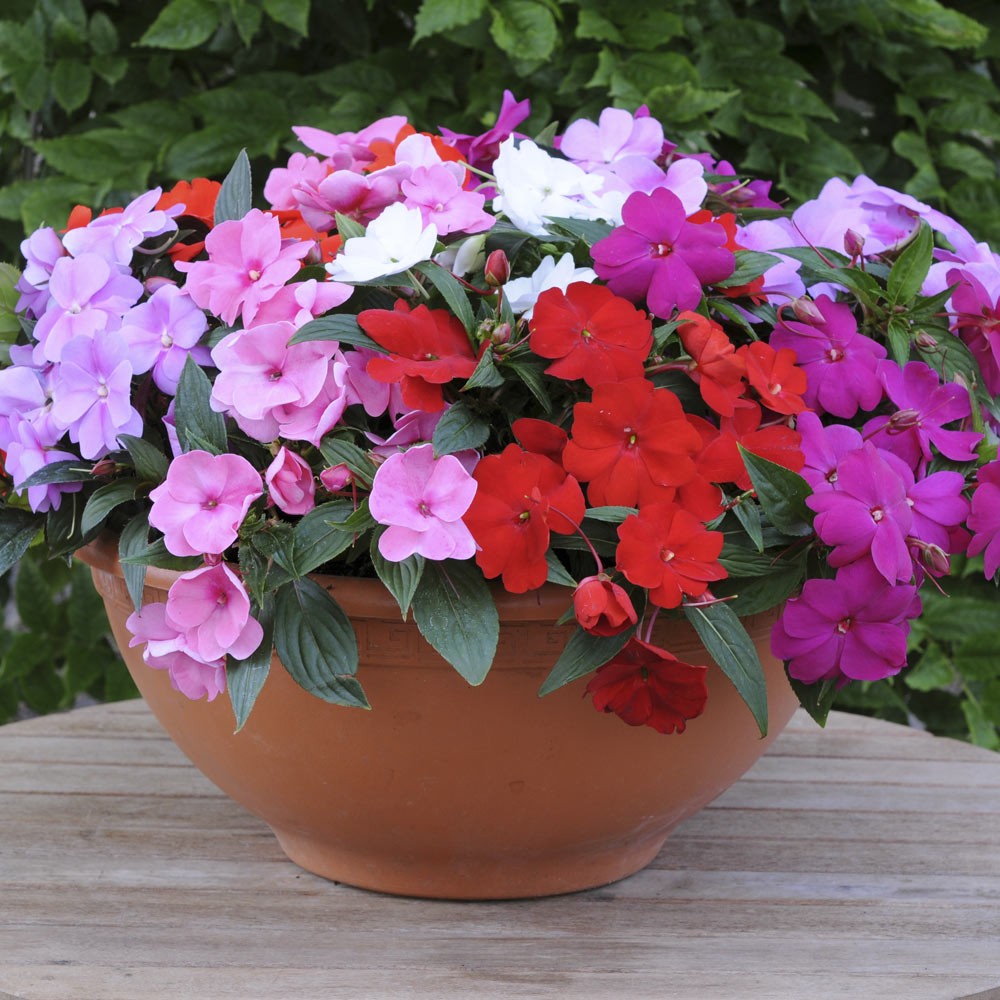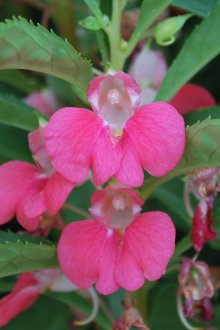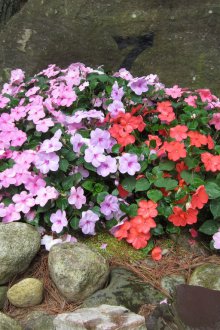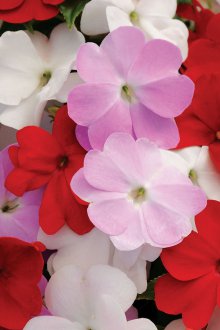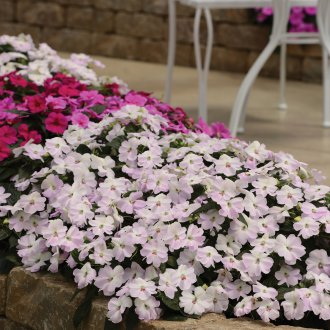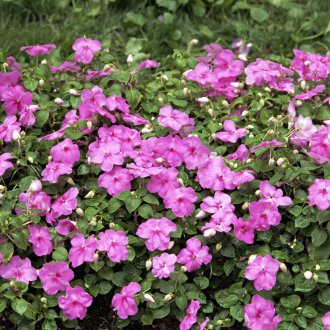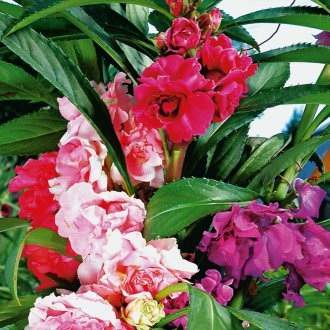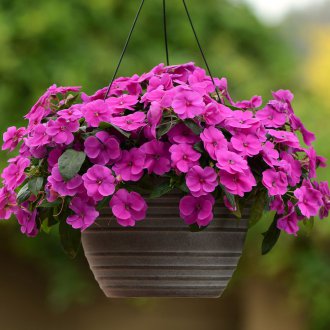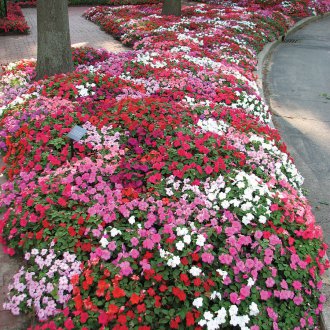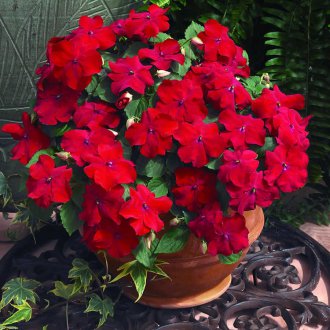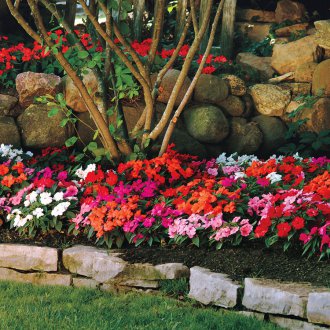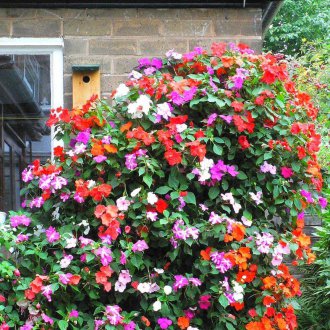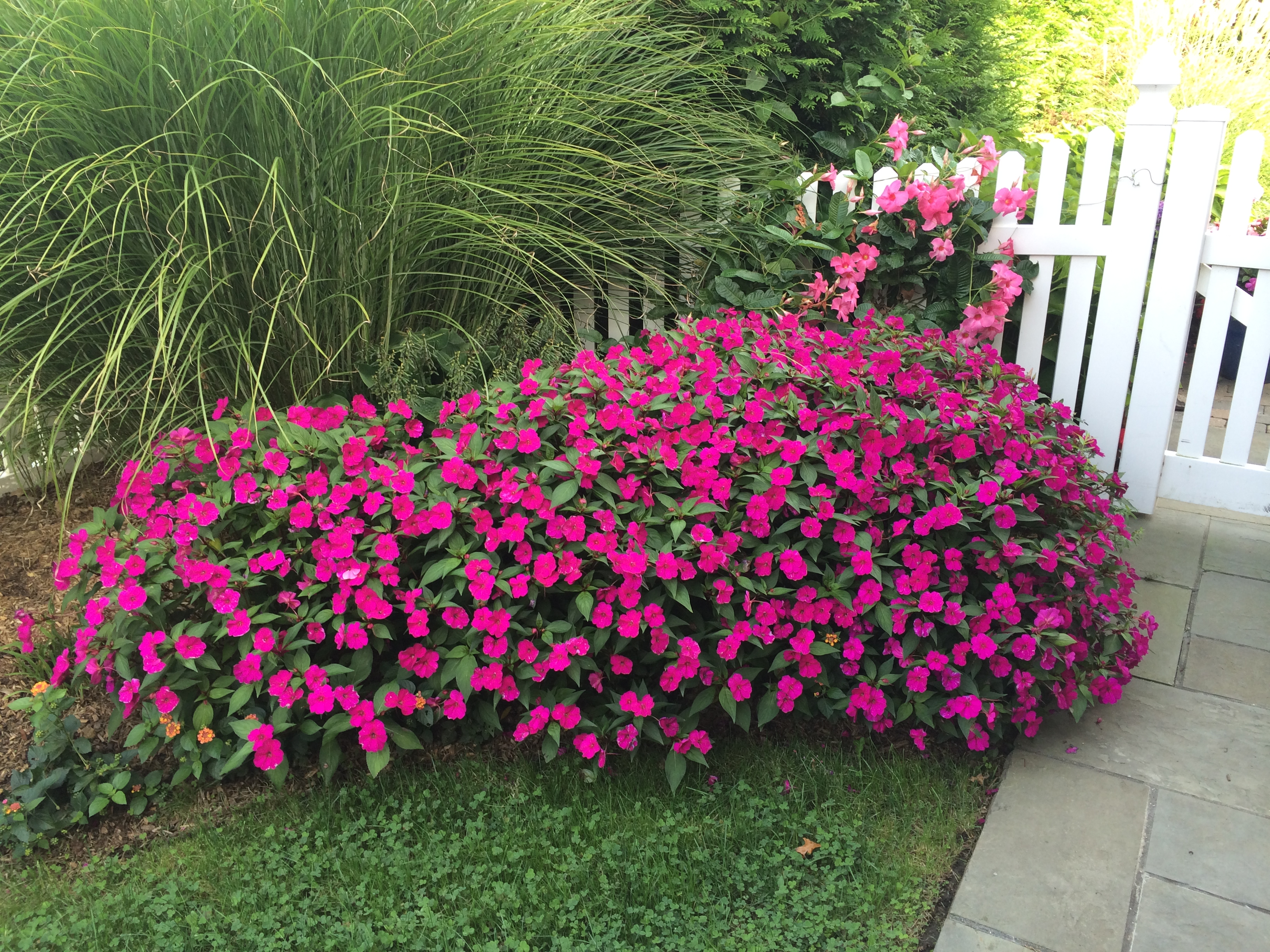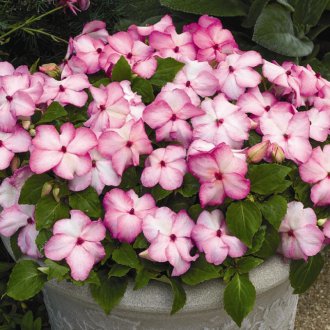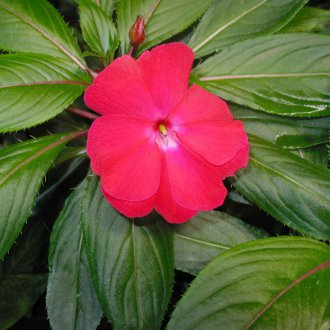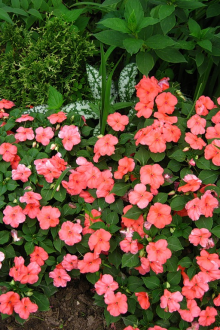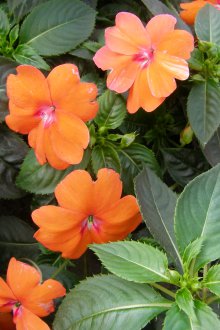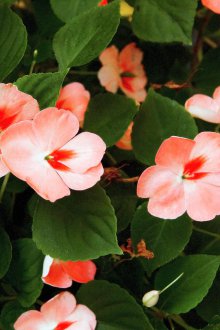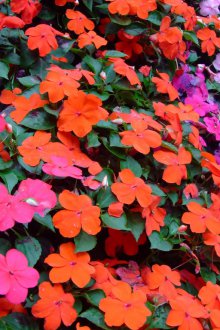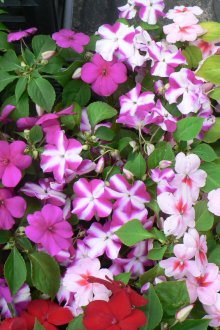Balsam garden - a picturesque decoration for a summer cottage and an apartment (24 photos)
Content
Balsamine belongs to the balsamic family. Today, this culture has fans almost all over the world. A variety of varieties allows you to choose herbaceous plants for open ground and for decorating the terraces of houses or window sills in apartments. In the apartment, balsam can become perennial thanks to lovers of floriculture and home care.
In appearance, this herbaceous crop resembles a shrub. The plant grows up to 70 cm high, and in diameter it can reach 45 cm. Balsam has an even stem densely covered with oblong and narrow fleshy leaves.
At the base of the leaves, in the sinuses, flowers grow. The natural palette of their color is pink-purple. However, hybrids can have shades of flowers of various colors - red, burgundy, lilac-lilac. Moreover, there are plants with single flowers, and collected in inflorescences. In open garden areas, flowering begins in May and ends with the first autumn frosts.
Seeds ripen in a box with a light edge. An indicator of seed maturity is the fragility of the capsule. It cracks from a light touch, and the seeds are "shot" at a distance of 2 m, hence the Russian name - touch.
Liquid droplets may stand out at the edges of balsam leaves. Because of this interesting feature, the plant is popularly nicknamed "Roly wet."
Types of Balsamins
When determining the variety of plants, they are repelled from the shapes of the leaf and flower, stem height (dwarf - up to 25 cm, medium-tall - up to 40 cm, tall - up to 75 cm).
Garden Balsam is the most common annual. On the open ground, flowering lasts from late May to October. At room conditions, the plant blooms for a longer period. Due to the different shapes of simple or double flowers, this species is divided into varieties: cameliform, pinkish, clove-colored. Most often planted varieties "Camelia Flowered", "Baby Bush", "Tom Thumb".
Garden balsam “Tom Thumb” is characterized by dense branches growing up to 25 cm. The plant has lanceolate leaves and flowers of various colors - white-pink, reddish, purple.
Balsam Waller is a shrub that is distinguished by a large variety of flowers (in shape and color). Dense inflorescences are often so plentiful that they can close all the leaves and this makes it look like a bouquet of flowers. In open ground, the plant begins to bloom from June until the first autumn frosts. The shrubs are spherical in shape and grow no higher than 30 cm, and dwarf varieties and no more than 15 cm. Based on this variety, breeders have bred quite a lot of hybrids: Stardust, Frosty, Symphony.
Hybrid "Symphony" stands out with its miniature bush size - up to 20 cm. This is an annual plant. Due to the different and vibrant color of the flowers, it is very popular in decorating borders.
Balsam Novogvineinsky - a hybrid with low and tall varieties (from 50 to 90 cm). The plant is distinguished by a strong trunk, on which dense leaves with a colorful pattern are located (the surface can have shades from saturated green to bronze or purple).The plant looks great both in the home greenhouse and on the terrace of the house (you can not leave flowerpots in the drafts).
Landing and care
When choosing the location of these stands, it must be remembered that these thermophilic plants react negatively to low temperatures and drafts or strong winds.
In order for the bushes to fully develop, the areas in the garden are selected sufficiently illuminated, but having some shadow at bright noon.
Basic soil requirements: fertile, drained, neutral acidity. It is desirable to establish a watering regimen regular, but moderate. If you provide periodic weeding of weeds and regular cultivation, then the balsam flower will appreciate the attention. In gratitude, the plant will bloom more abundantly and brighter.
When fertilizing plantings, the following nuances are taken into account:
- an excess of mineral salts can cause yellowing and falling of foliage, so it is better to make half the rate recommended by fertilizer producers;
- balsamins prefer foliar top dressing, which can be done twice a month throughout the entire period of plant growth;
- increased application of nitrogen-containing additives will lead to increased growth of foliage / stems and a decrease in the setting of flowers.
To cultivate and grow garden balsam, special technologies and techniques are not required. If wilted inflorescences are immediately cut off, then the intensity and duration of flowering will increase. Propagate the plant by seeds or cuttings.
Seed cultivation
Positive qualities of seeds - long shelf life (approximately 8 years), rapid germination (literally on the seventh day after sowing).
To seedlings for open ground was ready by early May, the seeds are sown in late February. The basic rules that must be observed when planting plants to obtain strong seedlings:
- the earth is pre-cultivated with fungicide;
- for friendly seed germination, constant humidity is maintained (therefore, the boxes are covered with a film) at a temperature of 23-25 ° C;
- after germination of seedlings, the temperature is reduced by about 6 ° C and artificial lighting is used;
- after the appearance of the first true leaves, you can dive seedlings into separate pots and grow there until planting in the ground;
- the earth in the tanks is moistened before planting in the garden. In order for additional roots to appear, the main root is shortened by 1/3 of the total length.
With this method of breeding, the bushes begin to bloom from the beginning of June. Seeds can be stored at the end of summer. Boxes are better to pluck unripe, as this will prevent the spread of seeds.
Propagation by cuttings
With this method of breeding, the top of the plant is cut off and dug in the sand or immersed in a container of water. As a rule, roots appear in 7-8 days. After that, you can plant the cuttings in open ground or in a separate pot with soil. Cuttings can be cut during the entire growing season.
A little trick will simplify this procedure. It consists in the fact that the plants are placed in a darkened room before the cuttings. This causes increased shoot growth. Elongated sprouts are easier to cut. Before immersing in water, remove the lower leaves that may touch the liquid.
Diseases and Pests
When growing and breeding plants, one must take into account the possibility of the manifestation of certain diseases, as well as know how to deal with pests:
- spider mite sucks the plant's juice when braiding leaves. To get rid of it, you can spray the bush with soap and water. If there is no improvement, then special chemical compounds must be applied;
- rot affects bushes after heavy irrigation, especially in cool weather. You can get rid of rot by draining the soil;
- viral mosaic damages the leaves - they curl, and yellow spots appear on the surface. It spreads aphid disease, which is better to fight with chemicals.
Since this shrub is annual, after the end of flowering, the remains of the plant are removed. This point can also be considered a preventive measure to combat diseases and pests.
Decorative use of balsamines
The plant is an active participant in the creation of bright and elegant landscape compositions or the design of paths and borders in parks and squares. Bushes are planted in separate independent groups, choosing harmonious combinations of plants with different shades of flowers.
Also, garden balsam can effectively be combined with begonia, violet. The bushes look very picturesque on the alpine slides. At the same time, it is important to select plants in the general ensemble that will become just a background for balsam.
Annual varieties, placed in flowerpots, will always exquisitely decorate balconies or verandas. Moreover, plants can be placed around the perimeter of the parapet or put in separate flowerpots.
Growing and caring for balsam does not take much time, and constantly flowering plants will always give the room or garden an elegant and picturesque look.
